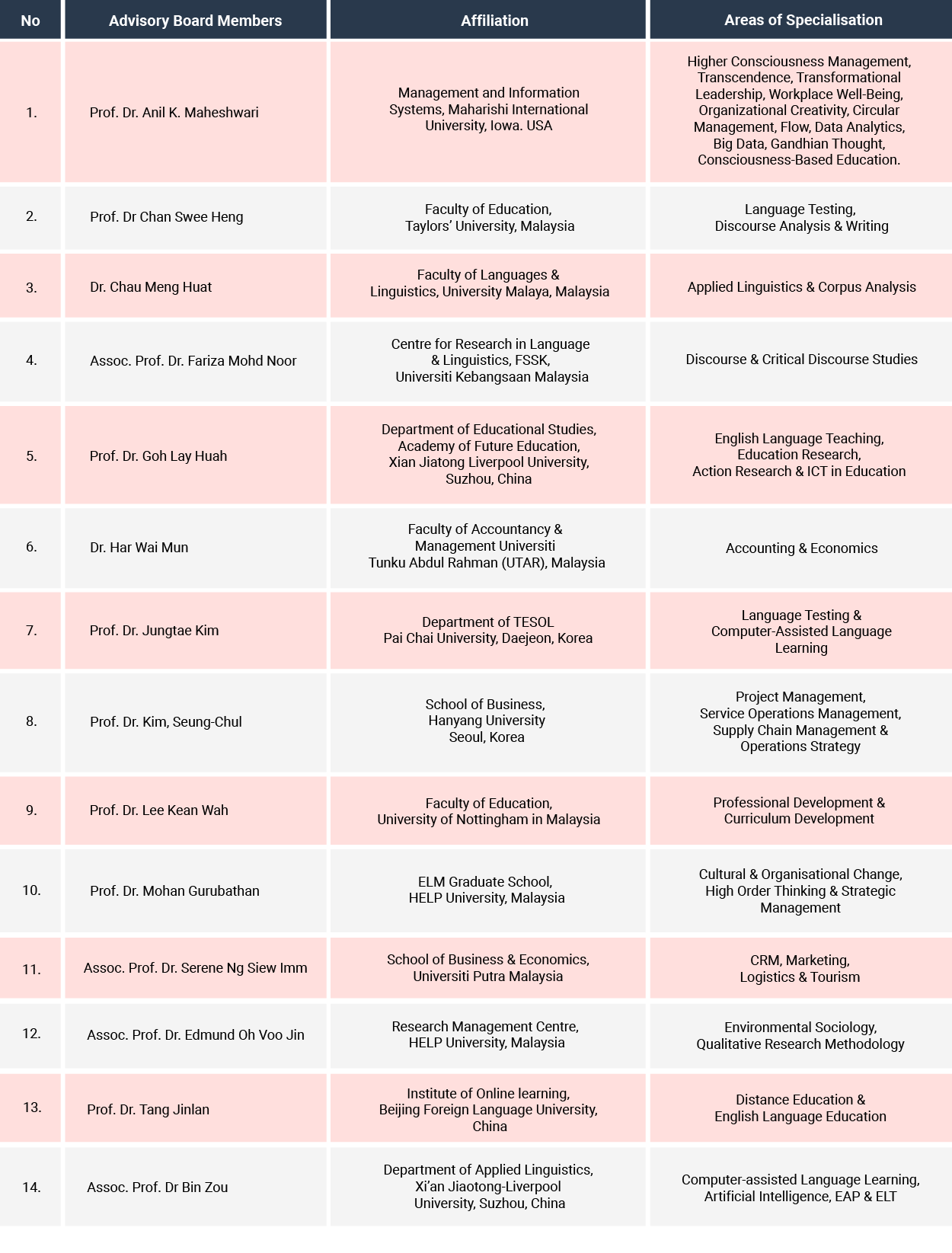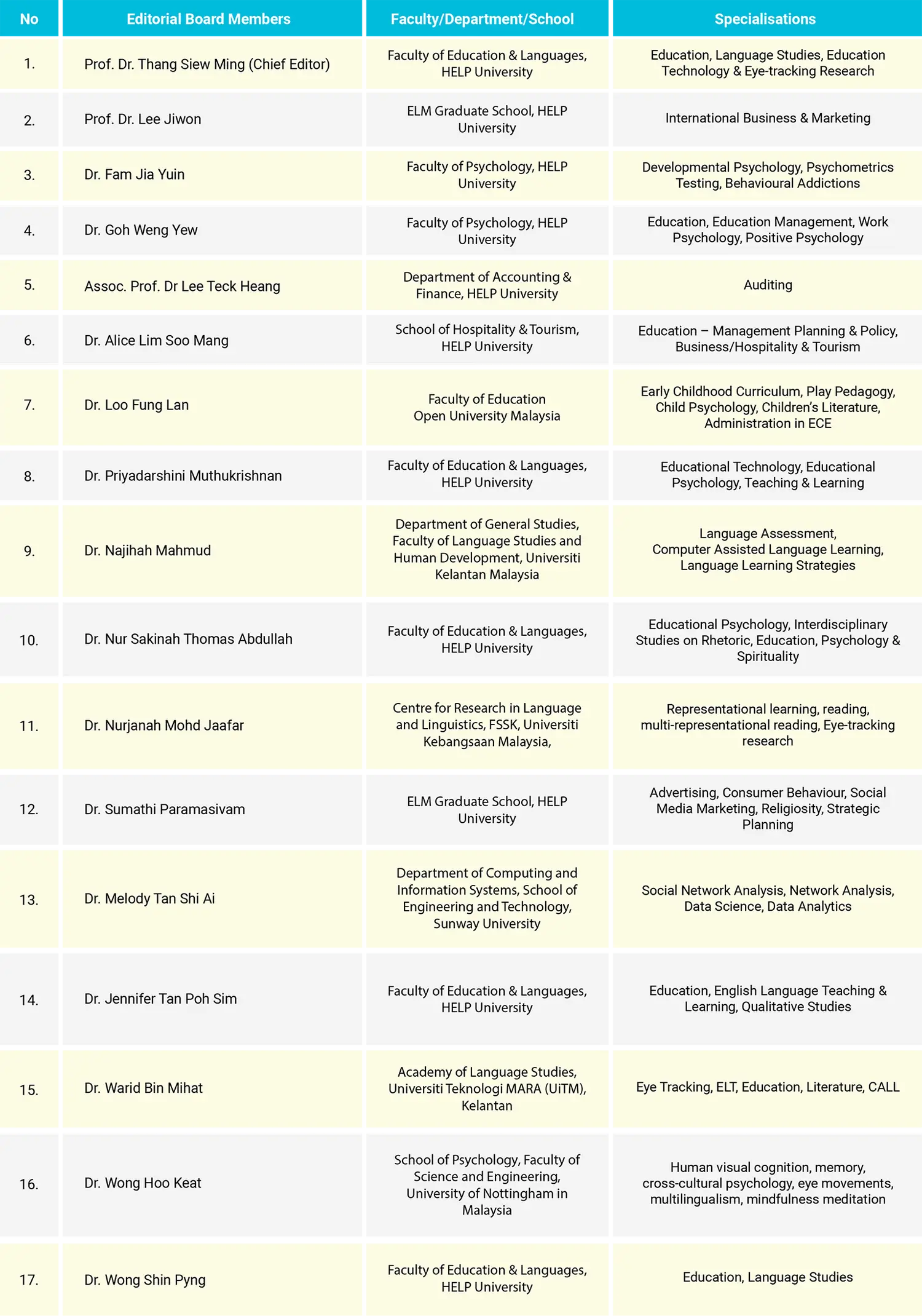
JER-HBT rely on external experts to review and evaluate articles and assist the editorial team in its decision making.
All original research papers relevant to the journal will be sent out to reviewers who are selected based on the subject matter expertise. The policy of the journal is to have both internal reviewers as well as external reviewers from other institutions. Authors of each paper are required to provide the names of two reviewers with expertise of the subject matter, but the editorial team reserves the right to make the final decision.
The journal utilises a double-blind method procedure which means that the names of the authors and reviewers are not disclosed to both parties. Reviewers will only receive papers on acceptance of invitation to review together with a form which clearly states the guidelines on issues to consider when undertaking the review. Reviewers are required to return their reviews in three weeks; should there be a delay, they are required to inform the editorial office. Decisions on publication of the research articles are made upon receipt of at least two review reports.
(i) Conflict of interest (or competing interests)
If the reviewer considers that there is any conflict of interest that may compromise their review, they can request to be excused from undertaking the review, an example of conflict is the reviewer is a close collaborator of the research concerned.
(ii) Confidentiality
Reviewers are not allowed to use information obtained from the papers for their personal gains. They are also not allowed to involve someone else in reviewing the paper (for example their students) without obtaining prior permission from the editorial office.
Submissions to the JER-HBT must be original, unpublished, and not under consideration for publication elsewhere.
Please consider that the editors and reviewers invest considerable effort on your submission. Consequently, the submission cannot be removed without the consent of the editorial office during the review, revision, production after acceptance, or publication processes.
There is NO submissions, publication, or page charges for this journal. The papers are accepted or rejected for publication and published solely based on merits of the paper.
Submission of the same paper to multiple journals concurrently is unethical. Likewise, publishing the same paper in multiple journals is also unethical. Any author found violating these principles will be blacklisted and will be banned from further submission to JER-HBT.
Authors are expected to carry out data collection following ethical procedures. The rights of the human participants or animal subjects should always be observed. The identity of human subjects is confidential and should not be revealed in the paper. Falsification of data is unacceptable.
Authors are required to properly cite and quote sources of literature that they use in their research papers. Plagiarism may be manifested in variety of ways such as using another’s paper as the author’s own, intentional, or unintentional copying or paraphrasing parts of another’s paper without citation and claiming results from research conducted by others. Hence, it is essential for authors to cite the original source and accurately reflect the contributions of the individuals in their writing or reporting. Additionally, JER-HBT requires authors to submit their papers to Turnitin prior to submission.
Plagiarism can also come in the form of using copyright-protected materials owned by a third party without permission. This may include any proprietary text, illustration, table, or other material, including audio, video, film stills, screenshots, musical notation, or supplemental material. JER-HBT requires authors to obtain permission from the copyright owner prior to submission for publication.
5. Spelling can be US or UK English so long as usage is consistent.
2. Author name(s), journal or book title, paper or chapter title, year of publication, volume, and issue (where appropriate) and page numbers are essential.
3. All in-text citations should be listed in references , and vice versa.
4. The addition of DOI (Digital Object Identifier) numbers is essential where applicable.
Copyright © 2023 by ELM Graduate School, HELP University
Published by:
ELM BUSINESS SCHOOL, HELP UNIVERSITY 15 JALAN SRI SEMANTAN 1, OFF JALAN SEMANTAN, BUKIT DAMANSARA, 50490 KUALA LUMPUR.
Email: siewming.t@help.edu.my
Telephone: +603-2716 2000 Ext 2017

